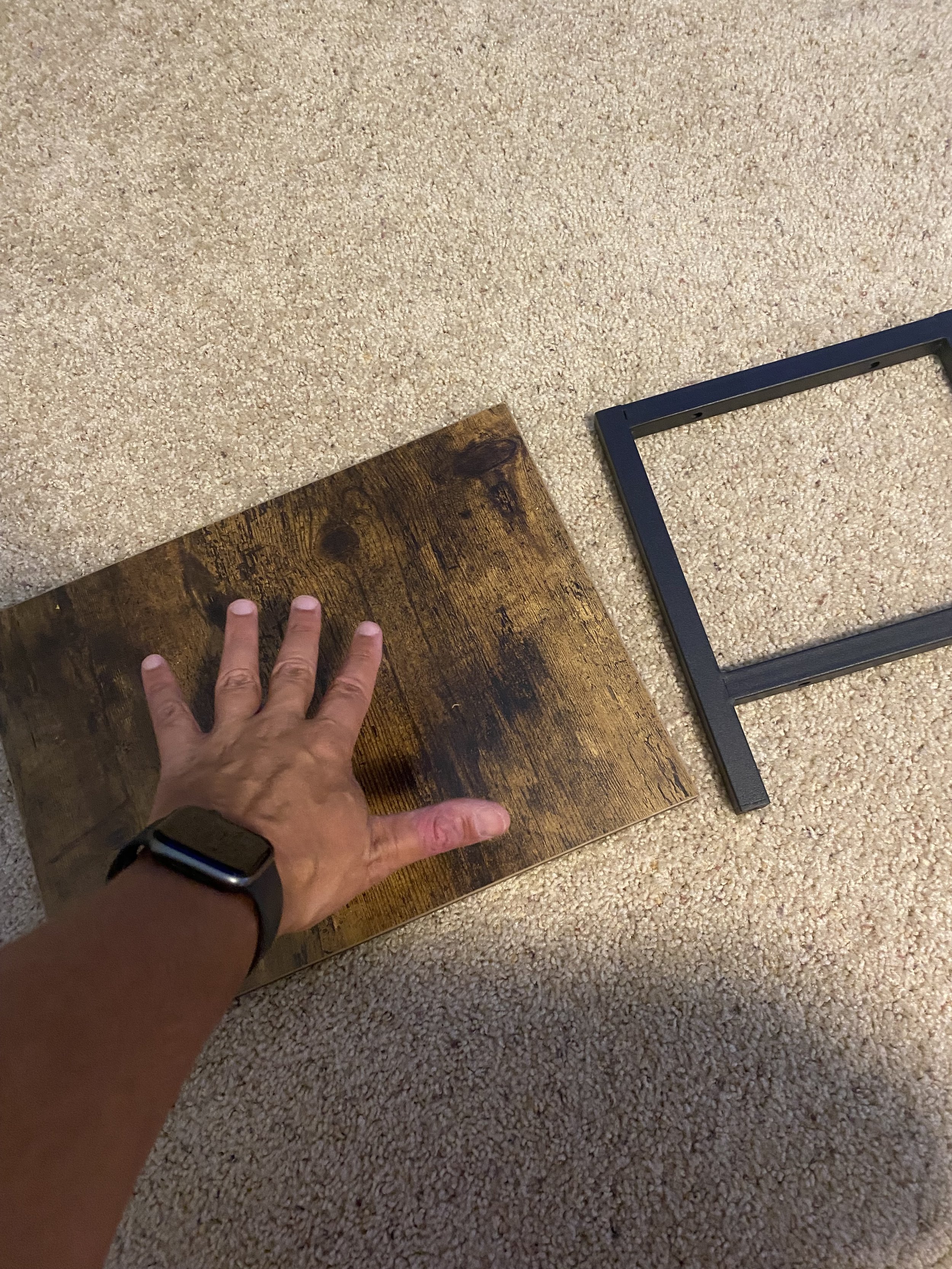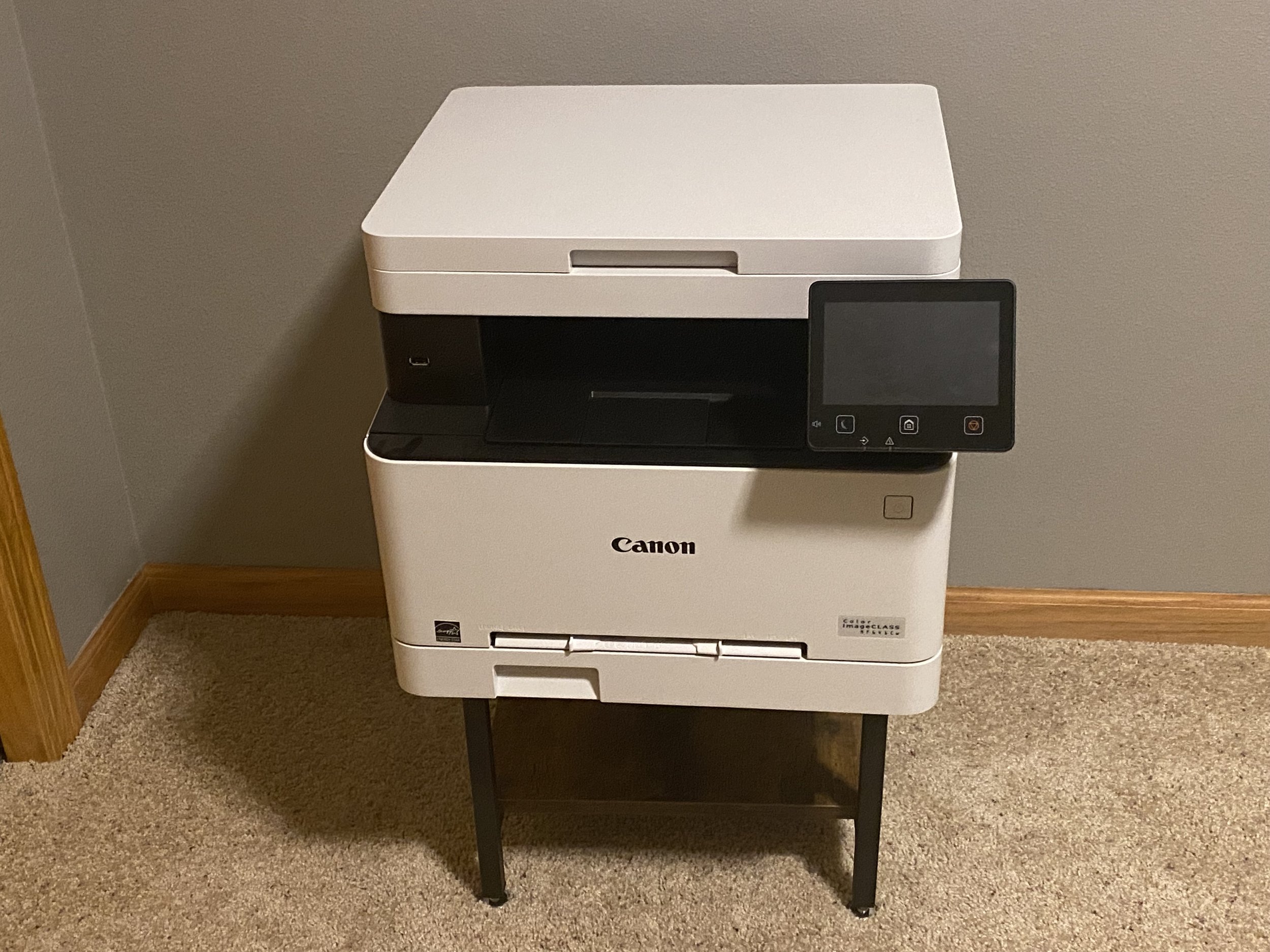The Problem
For the longest time I’ve had a Canon color inkjet printer. I don’t do a lot of printing and haven’t had much of a need to replace it. Sure, often I was frustrated with the cost of replacement ink cartridges or the cartridges drying up from lack of use. It did the job for the amount of printing I had to do. As I work with more and more customers, I’m often asked to sign a non-disclosure agreement as part of the process. While my printer had scanning capability, it was a pretty old and I didn’t have the needed drivers for the scanner to work properly. So, when a customer would require me to sign an NDA, I would have to print the form, fill it out, and then head to a courier service like UPS or FedEx to have the document scanned so I could send a signed copy of the document back to the customer. My printer just wasn’t going to cut it anymore.
I set out to find a replacement printer. I didn’t need anything on the fancy side. It needed to be a laser printer, print in color, be able to scan and copy, and if it could do duplex printing that would be a bonus. I researched the major brand offerings like Canon, Brother, HP, etc. and narrowed down my choices based on my requirements. Things were going pretty well once I found the printer I wanted. Except for one thing I didn’t think about: the pandemic. I could buy the printer I wanted but it was a 3 - 6 week lead time and the price was much higher than the MSPR, manufacturer’s suggested retail price. As I was walking through Walmart one day, I saw a printer special in the aisle of the electronics section. It had almost everything I wanted except for duplex printing and scanning. I could live without those features. The printer was on sale for a good price, and more importantly, it was in stock, and I could take it home with me that day. Perfect!
This printer was much larger than the printer it was replacing, and this printer wouldn’t fit on my desk. I needed a printer stand for it. I did what I think most people would do and I browsed to amazon.com to see what was available. I searched through what was available and it didn’t take me long to find what I was looking for. Or so I thought. I was surprised by how inexpensive the printer stand was, however, it looked like it was just what I was after. I hit the buy button, and since it was Prime eligible, I would only have to wait a few days for it to arrive. $31.13 later and the order was on its way. Here is what the printer stand I purchased looked like on Amazon.
Objects in mirror may be smaller than they appear
The first indication that something wasn’t right was on delivery day. I had been out running errands and received a notice that my package had been delivered. Great! When I got home, I popped outside to front door stoop and saw my package sitting there. But something didn’t seem quite right. This is what I saw sitting on the step.
There must be some mistake! How could the printer stand I purchased come in such a small box? I know companies are getting clever with the way the ship and assemble flat pack furniture, but I just couldn’t see how this one was going to work out in my favor. I took the box down to the office and opened and unpacked the contents. Turns out there was no shipping and assembly miracle packed away. Here is what it looked like as I started to assemble the stand. Here is a picture of the top shelf and side support weldment. I put my hand in the photo for scale, and no, I am no giant with enormous hands!
I continued until the stand was fully assembled. How could this be? It doesn’t look anything like the photo listed on Amazon. I went back to Amazon to review my order and on the specifications page, the overall size of the printer stand was listed. The dimensions on the page matched the dimensions of the printer stand I had assembled in the office. Shame on me for not being careful and realizing there is no way I was going to get what I thought I was going to get for the $31 dollars it cost me.
The Plan
So, what next? I could go back to Amazon.com and continue the hunt for a suitable printer stand. I could make some visits to my local big box stores, or even furniture stores to see if I can find what I want. It might even be a good idea to do some searching on the internet to see if i can find what I want. But is that what I’m going to do? Nope.
Instead, I think I’ll take the opportunity to use Fusion 360 to design a concept I’ve had in my head for quite a long time on a metal and glass corner desk design. I’ve never turned that concept into a reality for a couple of reasons. The first reason being cost. The second reason being that I’m not 100% the design will work. Below is the original concept I cam up with for a corner desk made out of steel tubing and glass. There are more tricks to this design than I have shown here, as well as newer variations that add some missing components not shown in this design.
I plan on making some of the components on the Syil X7 CNC mill in the garage and others will be done by vendors. The most challenging part of this build will be the glass components. Cutting the shape wont be difficult, however, having countersunk holes drilled into the glass is going to be a challenge. In fact, I’m not even sure it will be possible. From what i have read so far it can be done to non-tempered glass that will then have to be tempered. I may also consider using a glass alternative.
Project Progress and your input
Follow along and you see how I use Fusion 360 concept design, and once mocked up, how model and organize the final product. I’d love to get your input on the design as well as ideas you may have.






